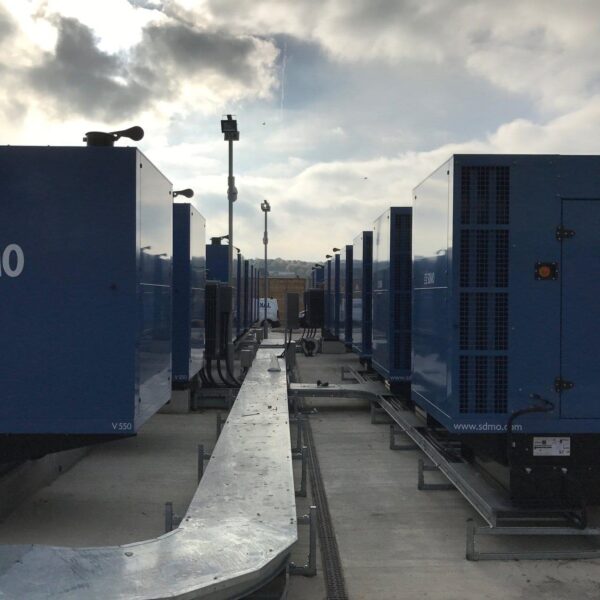Demand for uninterrupted power continues apace, with OMDIA forecasting in its 2021 Hardware Market Tracker Report that the global UPS market will grow 35% from around $9bn in 2021 to over $12bn in 2025. As demand and technology evolve, KOHLER Uninterruptible Power is happy to offer guidance from the regularly updated content it presents at its acclaimed, CPD approved UPS Academy sessions.
Know your load
Apart from basics like whether the load is single or three-phase and the kVA rating, when considering a UPS it is also necessary to identify if it is a traditional IT load, a mechanical load (with potentially damaging back-fed current) or a life-safety load, covered by special regulations.
The level of protection required must also be determined – if the equipment will be affected by a break in power then an “offline” VFD (Voltage and Frequency Dependent) UPS will be unsuitable. In addition to a complete outage, “online” UPS systems can either protect from just voltage variations (VI – voltage-independent) or voltage and frequency variations (VFI – voltage and frequency independent). Modern equipment generally requires continuous VFI protection but when comparing UPS quotes it is not always clear which models offer what protection.
Similarly, the output power factor of a UPS must be suitable for your load. Many modern UPS systems have a “unity” power factor of 1.0, meaning for example a 100kVA UPS will support a 100kW load. However, there are still many UPS systems in the market with power factors of 0.8 or 0.9, meaning that although they may be a 100 kVA UPS system they could only support a load of 80 or 90kW respectively.
Modularity helps with Redundancy and Efficiency
The redundancy level for an IT UPS system will usually be specified in line with facility “Tier categorisation”, so for example a Tier II facility would normally have an N+1 arrangement with a single feed, Tier III would require twin feeds and Tier IV twin feeds and a 2N or 2(N+1) arrangement. However, approaches to providing the “+1” aspect of the redundancy have changed greatly.
Historically the redundancy would have been delivered by adding a complete second system of the same size as the first, so for instance 2 x 100 kVA systems. With the rapid growth of modular UPS systems an “N+1 100 kVA system” could instead comprise 6 x 20 kVA modules. A full set of components in the sixth module provide all the redundancy required but with only 20% extra power instead of 100% extra.
If designed for hot swappability, modular systems also allow faster repairs in the event of a problem and for individual modules to be maintained without the whole system being turned off. Duplication of components in modular systems inevitably increases initial costs per kVA compared to “standalone” or “monolithic” systems where everything is in one box, but if only 120 kVA of capacity is being bought instead of 200 kVA this can offset things.
Furthermore, as most systems are planned to grow over time, a modular approach may allow less capacity to be bought initially and additional modules slotted into unpopulated, pre-connected bays as loads increase.
More advanced modular systems will optimise load sharing across modules to optimise efficiency, with some such as KOHLER’s even determining when unnecessary modules can be put into standby to further increase efficiency. (As a benchmark, modern, transformerless UPS systems typically offer 96% to +97% efficiency in the key online VFI mode).
Space vs Time vs Mass
If power fails, batteries will be called upon. Typically “VRLA” lead-acid type these are heavy and bulky so there may be compromises between time battery back-up power will last, the space there is to house them and the weight the floor in the proposed location can handle.
Often excessive runtimes are specified that increase space, weight and cost so consider carefully what autonomy you really need, especially if generators are also available.
As chemical stores of energy batteries need keeping at the correct temperature – too warm and the chemicals in them react overly fast, decreasing lifetime; too cold and slow reaction means the power given up by the battery will be insufficient to support the load. Generally 20˚C is recommended, so in the UK some form of climate conditioning is required. (As a word of caution, for every 10˚C above 20˚C the service life of a VRLA battery system halves. Conversely, active charge balancing systems such as PowerNSURE from KOHLER can increase battery service life by 30%.)
If space, weight or temperature challenges exist then lithium-ion based solutions are now common. At around half the weight and size these can be a great solution and include battery management systems as standard to ensure safety. Given widespread competition for lithium-ion materials though these remain significantly more expensive than VRLA battery systems for power protection, and many still wonder about their sustainability. (In contrast an established network already today recycles over 98% of lead-acid batteries.)
To learn more, please contact KOHLER Uninterruptible Power for details of our free UPS Academies or ask us to quote you for your project.





